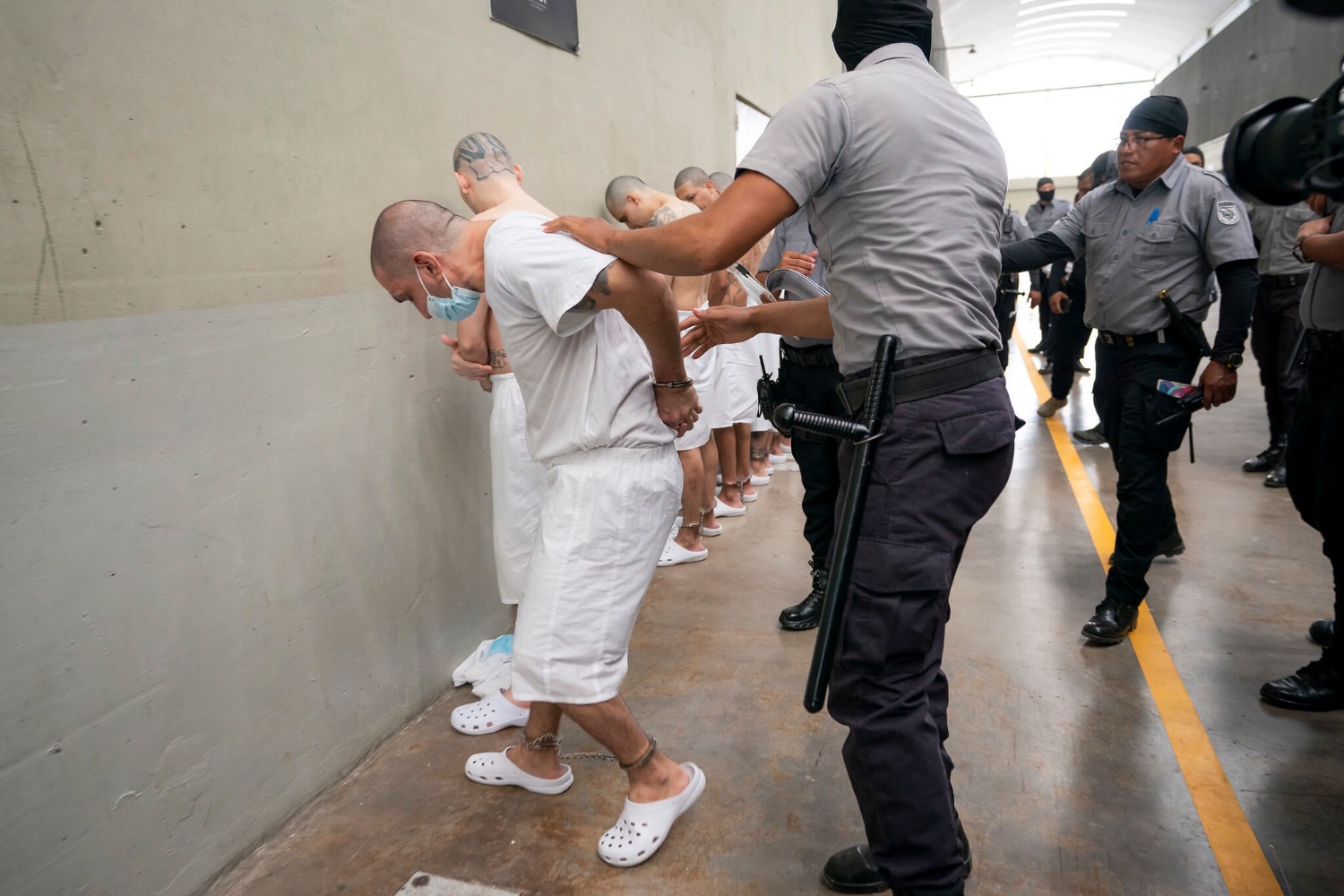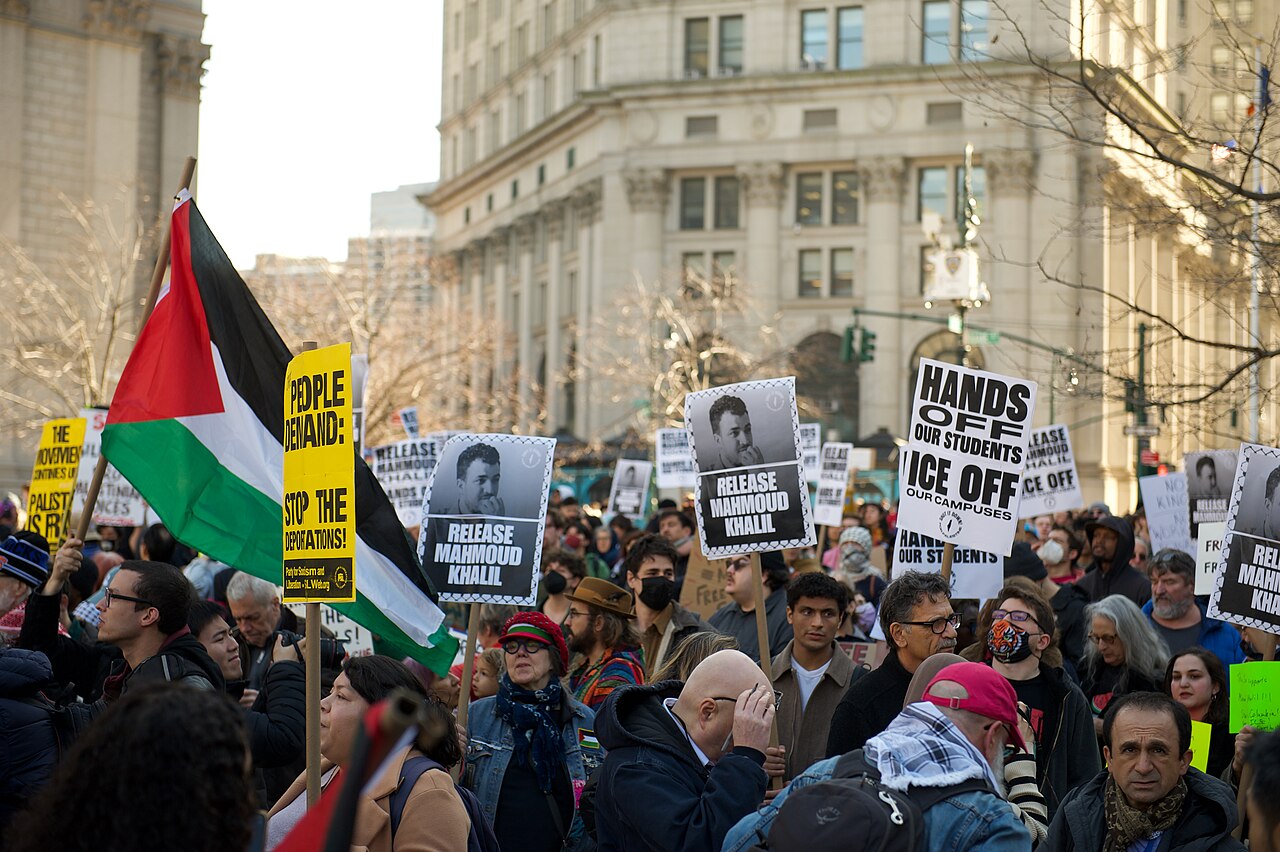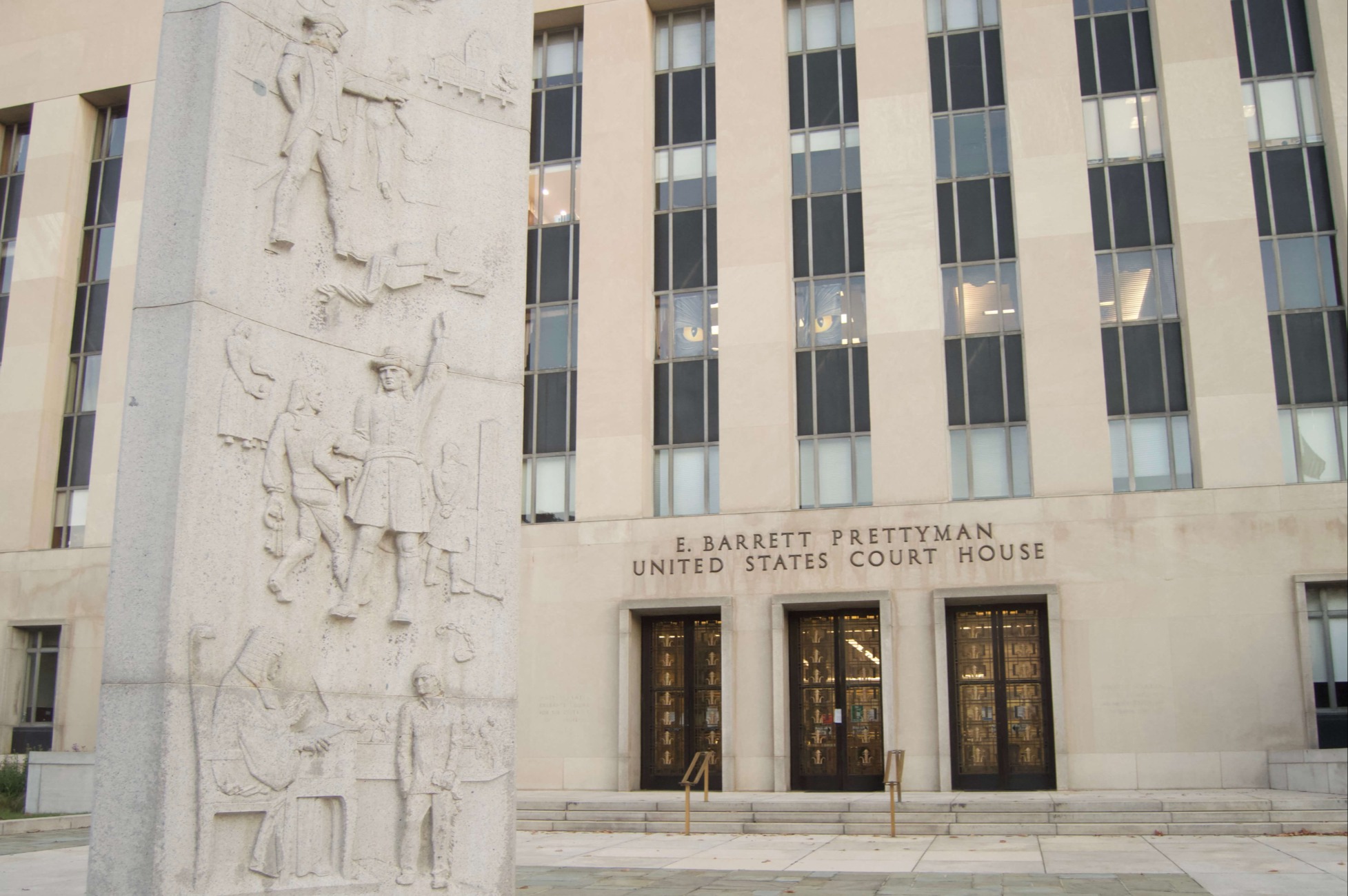The Supreme Court Travel Ban Ruling: A Summary
The Supreme Court's decision Tuesday in Trump v. Hawaii decisively puts to bed the “preliminary injunction” round of litigation over President Trump’s travel ban. In a 5-4 decision, with the majority opinion authored by Chief Justice John Roberts, the Supreme Court issued two core holdings: (a) that the latest ban does not exceed the president’s authority under the Immigration and Nationality Act (INA); and (b) that ban does not violate the Establishment Clause of the Constitution.
Published by The Lawfare Institute
in Cooperation With

The Supreme Court's decision Tuesday in Trump v. Hawaii decisively puts to bed the “preliminary injunction” round of litigation over President Trump’s travel ban. In a 5-4 decision, with the majority opinion authored by Chief Justice John Roberts, the Supreme Court issued two core holdings: (a) that the latest ban does not exceed the president’s authority under the Immigration and Nationality Act (INA); and (b) that ban does not violate the Establishment Clause of the Constitution.
The present case deals with the third iteration of the travel ban, “Proclamation No. 9645.” The proclamation replaces two earlier executive orders, each of which was replaced after meeting significant legal challenges. The most recent version is more carefully drafted and appears to be, at least in part, the result of an interagency policy process that included input from the Department of Homeland Security and intelligence agencies.
Shortly after it came into effect, Proclamation 9645 was challenged in federal district court in Hawaii. The challenge was brought by three U.S. nationals whose relatives are from affected countries; by the Muslim Association of Hawaii; and by the state of Hawaii in its capacity as operator of the University of Hawaii system, which recruits students and faculty from affected countries. The district court issued a nationwide preliminary injunction, finding that the plaintiffs were “likely to succeed” in full litigation, as the proclamation appeared to violate both the Immigration and Nationality Act and the Establishment Clause. The Ninth Circuit affirmed, finding that the proclamation likely violated the INA, but it declined to reach the constitutional question.
Majority Opinion
A. Statutory Claim
Justice Roberts begins the opinion by quickly assuming (without deciding) that the court does indeed have the power to review the challengers’ statutory claims. Jurisdiction, he warns, may be complicated by the doctrine of “consular non-reviewability” (reflecting the fact that visa decisions are “a fundamental act of sovereignty”). Nevertheless, as in a 1993 case (Sale v. Haitian Centers Council), the Supreme Court can proceed by assuming it has jurisdiction—as it will find against the plaintiffs on the merits.
Next, the court turns to the statutory text. §1182(f) of the INA, the court emphasizes, seems to give the president broad discretionary power. The provision empowers the president to “suspend the entry of all aliens or any class of aliens” if he “finds” that entry “would be detrimental to the interests of the United States.” The court explains that this language “exudes deference” to the president, a deference heightened by the foreign policy and national security context. The court also emphasizes that the statute only mentions a presidential finding of national interest; the statute does not, however, seem to require the president “to explain that finding with sufficient detail to enable judicial review.” Moreover, given the sparse explanations offered in previous exercises of §1182 (such as President Bill Clinton’s 1996 exclusion of Sudanese government and military officials), Trump’s explanation of the ban’s purpose more than suffices.
The court also rejects plaintiffs’ insistence that the proclamation’s open-endedness violates §1182(f)’s “suspension” language (implying a “temporary measure”). Justice Roberts writes that most similar executive orders have not had specific end dates but were “temporary” in that they were linked to a specific problem or circumstance and would presumably be lifted with the addressing of such circumstances. Trump’s ban appears to follow precisely this pattern.
Next, the court rejects claims that the ban violates other provisions of the INA. Plaintiffs had argued that Congress had already legislated specific means to address certain countries’ failure to provide adequate information: Such measures included: (a) Individual consular assessments and requirements that individuals supply such information and (b) a visa waiver program to apply pressure to recalcitrant countries. The Supreme Court concluded, however, that nothing about such measures limits the power that the INA grants the president to apply additional measures if he deems the circumstances require them. Similarly, nothing in the statutory text nor consistent practice limits the use of §1182(f) to “emergency” situations, as the plaintiffs argued.
Finally, the court rejects plaintiffs’ argument that another provision of the INA, §1152(a)(1)(A) (providing that “no person shall ... be discriminated against in the issuance of an immigrant visa because of the person’s race, sex, nationality, place of birth, or place of Residence”) limits the president’s broad §1182(f) authority to deny entry based on nationality. §1152’s non-discrimination provision, the court emphasizes, applies simply to the issuance of visas; it has nothing to do with determinations of admissibility—which under the INA is an entirely different stage of the process, subject to an entirely different set of legal rules and standards. Historical practice confirms this: Past executive orders (by President Jimmy Carter in 1979 and President Ronald Reagan in 1986) also suspended entry to aliens based on nationality.
B. Constitutional Claim
The Supreme Court then turned to the plaintiffs’ Establishment Clause claim.
First, the court quickly determines that plaintiffs do indeed have standing. While the question of standing based on a nebulous “dignitary” harm to their religion might be debatable, standing based on family separations—caused by the order’s prohibition on travel into the United States from certain countries—is not. Such separations, when based on a possible constitutional violation, are unquestionably a concrete harm sufficient for Article III standing. (Whether the Establishment Clause itself confers a legally protected interest to family members for their relatives’ admission is a separate question, to be decided on the merits.)
After cataloguing a number of explicit statements by the president (and his advisers) connecting a prospective travel ban with animus toward Islam and Muslims, Roberts seems to gently chide the president. Recounting expressions of religious tolerance by a number of presidents, from George Washington to George W. Bush, the court notes that “Presidents have frequently used that power to espouse the principles of religious freedom and tolerance on which this Nation was founded. … Yet it cannot be denied that the Federal Government and the Presidents who have carried its laws into effect have—from the Nation’s earliest days—performed unevenly in living up to those inspiring words.” Nevertheless, the court concludes that it is not its place “to denounce the statements” but to determine “the significance of those statements in reviewing a Presidential directive, neutral on its face, addressing a matter within the core of executive responsibility.”
Unlike traditional Establishment Clause cases (such as “religious displays or school prayer”), the court emphasizes that this case takes place within an arena (that of national security, immigration and foreign policy) that is generally left to the political branches. A different standard of review is therefore necessary. And citing a 1972 case, Kleindienst v. Mandel, the court points out that it generally does not look beyond the “facially legitimate and bona fide” reasons offered by the executive branch in such areas. Such deference is critical, the court explains, in allowing the president the “flexibility” necessary to respond to a rapidly changing immigration and national security landscape. Nevertheless, the court seems to be willing to move a bit beyond Mandel, ruling that “for our purposes today, we assume that we may look behind the face of the Proclamation to the extent of applying rational basis review.” In a footnote, the court clarifies that the “constrained standard of review” represented by rational basis “applies to any constitutional claim concerning the entry of foreign nationals.”
Applying rational basis review, the court agrees to “consider” extrinsic evidence but explains that it will ultimately decide the case based on whether the “policy is plausibly related to the Government’s stated objective” (i.e., protecting the country and improving the vetting processes). Under this lenient standard, the court decisively upholds the policy. The court explains that the policy “is expressly premised on legitimate purposes,” “reflects the results of a worldwide review process undertaken by multiple Cabinet officials and their agencies,” and justifies the inclusion of each country placed on the list.
Moreover, the court concludes that the removal of three Muslim-majority countries (Iraq, Sudan and Chad) from the list, the existence of carve-outs for non-immigrant permanent residents and asylum seekers, and the inclusion of a waiver program all add plausibility to the travel ban’s facially claimed purposes. It emphasizes that, despite the doubts raised by the plaintiffs and the dissenting justices over the “effectiveness and wisdom” of the order, the court “cannot substitute [its] own assessment for the Executive’s predictive judgments on such matters,” particularly in the realm of national security and foreign policy.
Finally, the court forcefully dismisses Justice Sonia Sotomayor’s invocation of Korematsu v. United States in her dissent. Unlike the current ban, which simply denies the “privilege” of entry to foreigners based on “facially neutral” policy, the court argues that “the forcible relocation of U. S. citizens to concentration camps, solely and explicitly on the basis of race, is objectively unlawful and outside the scope of Presidential authority.” The comparison, the court insists, is “wholly inapt.” In any case, the court concludes, that the dissent’s reference to Korematsu provides the opportunity “to make express what is already obvious: Korematsu was gravely wrong the day it was decided, has been overruled in the court of history, and—to be clear—’has no place in law under the Constitution.’”
Finding that the plaintiffs have not shown a “likelihood of success on the merits”—the legal standard for granting a preliminary injunction—the Court reverses the injunction and remands to the Court of Appeals.
Concurrences
Justice Anthony Kennedy
In a short concurrence, Justice Kennedy agrees with the majority opinion that governmental action may be subject to judicial review to determine whether “anything but animus” can explain it, while noting that the question of reviewability is a matter for the lower court to determine on remand. In a tacit acknowledgement of the president’s comments, Justice Kennedy emphasizes that even in those “numerous instances in which the statements and actions of Government officials are not subject to judicial scrutiny or intervention,” those officials are not “free to disregard the Constitution and the rights it proclaims and protects.” He goes on to say that “the very fact that an official may have broad discretion, discretion free from judicial scrutiny, makes it all the more imperative for him or her to adhere to the Constitution and to its meaning and its promise.”
Justice Clarence Thomas
Justice Thomas’s concurrence briefly addresses the merits of the plaintiffs’ claims but centers on the remedy: a preliminary nationwide injunction awarded by the lower court.
On the merits, Justice Thomas first says that Section 1182(f) of the Immigration and Nationality Act does not provide any “judicially enforceable limits that constrain the President,” “nor could it” given the president’s “inherent authority to exclude aliens from the country.” Citing Town of Greece v. Galloway, he adds that the Establishment Clause does not create an individual right to be free from all laws that a “reasonable observer” might view as religious or anti-religious; further, the plaintiffs are unable to raise any other First Amendment claim because the alleged discrimination is directed at aliens abroad, not U.S. persons. Finally, he says that the evidence of anti-Muslim discrimination that the plaintiffs proffered was unpersuasive.
The body of Justice Thomas’s concurrence focuses on the remedy that the plaintiffs sought and obtained from the district court: a nationwide injunction. Justice Thomas first emphasizes the negative impact of nationwide injunctions, which first emerged in the 1960s, arguing that they prevent “legal questions from percolating through the federal courts”; promote forum shopping; and make “every case a national emergency for the courts and for the Executive Branch.” He then questioned the district court’s specific authority to issue such injunctions, concluding that they “appear to be inconsistent with longstanding limits on equitable relief and the power of Article III courts” because:
- No statute expressly grants the district courts the power to issue universal injunctions; and
- The court’s inherent constitutional authority is limited by the traditional rules of equity at the time of the founding (Guaranty Trust Co. v. York), which did not provide for universal injunctions.
Justice Thomas goes on to explain why the founding generation viewed equity with suspicion, emphasizing that U.S. courts have traditionally understood judicial power as the “the power to render judgements in individual cases.” (Murphy v. National Collegiate Athletic Assn.) “As a general rule,” he says, “American courts of equity did not provide relief beyond the parties to the case. If their injunctions advantaged nonparties, that benefit was merely accidental.” He concluded by finding universal injunctions to be both “legally and historically dubious.”
Dissents
Justice Stephen Breyer, joined by Justice Elena Kagan
Justice Breyer’s dissent considers whether the president’s travel ban was indeed a Muslim ban or a security measure by focusing on the proclamation’s elaborate system of exemptions: both their legal language and their realized application. He writes that if the government were applying the proclamation as written, there would be a strong argument for its lawfulness and resemblances to two prior presidential precedents on points (the 1979 Carter order and the 1986 Reagan proclamation). But there is, he writes, strong evidence that the government is not actually applying the proclamation’s system of exemptions and waivers, raising questions about how “the Government [can] successfully claim that the Proclamation rests on security needs if it is excluding Muslims who satisfy the Proclamation’s own terms.”
Justice Breyer grounds this evaluation of the proclamation’s practical implementation on basis that that no guidance was issued to the secretaries of state or homeland security to decide whether to grant a waiver; only a “miniscule percentage” of immigrant visas were granted for those eligible (only two out of 6,555 eligible in the first month after the proclamation was promulgated); despite the fact that the proclamation does not apply to asylum seekers or refugees, only have a few have been admitted (13 have arrived since 2018, compared with 15,000 in 2016). According to an affidavit filed in a pending case in the Eastern District of New York, a consular officer reportedly said that he did not have the discretion to file waivers at all; another report showed that the U.S. embassy in Djibouti received instructions to grant waivers only in “rare cases of imminent danger.”
Acknowledging that “declarations, anecdotal evidence, facts, and numbers taken from amicus briefs are not judicial factfindings” and that the government did not have the opportunity to contest these figures, Justice Breyer says that that he would send the case back to the district court for further proceedings and would, in the meantime, leave the injunction in effect. However, if pressed to decide the case without further litigation, Justice Breyer concludes that “I would, on balance, find the evidence of antireligious bias … a sufficient basis to set the Proclamation aside.”
Justice Sonia Sotomayor, joined by Justice Ruth Bader Ginsburg
In a 28-page dissent, Justice Sotomayor, joined by Justice Ginsburg, said that the court’s opinion failed to safeguard the fundamental principle of religious neutrality in the First Amendment and a “reasonable observer would conclude that the Proclamation was motivated by anti-Muslim animus.”
Acknowledging that the court must “take care not to engage in ‘any judicial psychoanalysis of a drafter’s hearts of hearts’” (internal citations omitted), Justice Sotomayor argues that the text of the government’s policy, its operation and available evidence regarding its historical background would suggest a government policy explicitly favoring one religion over another—an action the court has historically recognized as fostering “hatred, disrespect, and even contempt of those who [hold] contrary beliefs.” As evidence of the proclamation’s racial animus, Justice Sotomayor cites President Trump’s 2015 campaign statement (which remained on his website until May 2017); the manner in which Trump characterized the proposal during the election campaign, including analogies he made to President Franklin Roosevelt’s internment policy for Japanese-Americans during World War II; the White House press secretary’s statement following the issuance of the second executive order that the president would continue to deliver on his “most significant campaign promises”; Trump’s tweets after the ban went into effect, including references to the story of Gen. John J. Pershing’s massacre of Muslims in the Philippines; Trump’s retweet of three anti-Muslim videos initially tweeted by a British political party whose mission is to oppose “all alien and destructive politic[al] or religious doctrines, including … Islam”; and the fact that “[d]espite several opportunities to do so, President Trump has never disavowed any of his prior statements about Islam.”
Throughout her opinion, Justice Sotomayor cites the court’s recent decision in Masterpiece Cakeshop, Ltd v. Colorado Civil Rights Comm’n, emphasizing that “the Court recently found less pervasive official expressions of hostility and the failure to disavow them to be constitutionally significant.” Justice Sotomayor goes on to say that the majority’s rational-basis review of the proclamation is perplexingly lenient: She would evaluate the travel ban under the heightened scrutiny used in other Establishment Clause cases, “including those involving claims of religious animus or discrimination.” But, she writes, the proclamation would fail even under rational-basis review because the proclamation is “‘divorced from any factual context from which we could discern a relationship to legitimate state interests’ and ‘its sheer breadth is so continuous with the reasons offered for it.’” She continues: “even a cursory review of the Government’s asserted national-security rationale reveals that the Proclamation is nothing more than ‘a religious gerrymander.’” That the proclamation included minor restrictions on two non-Muslim-majority countries, she argues, is of “no moment.” Not only had Congress already addressed the national security concerns at issue in the proclamation through an extensive scheme embodied in the Immigration and Nationality Act and Visa Waiver Program, but the fact that “the Government’s analysis of the vetting practices of hundreds of countries boiled down to such a short document raises serious questions about the legitimacy of the President’s proclaimed national-security rationale.”
Turning to the remedy sought by the plaintiffs, Justice Sotomayor argues that the plaintiffs are entitled to a preliminary injunction because they have (1) have shown a likelihood of irreparable harm in the absence of an injunction and (2) demonstrated that the balance of the equities tips in their favor in light of the government’s “nebulous national-security concerns.” She writes, “Although national security is unquestionably an issue of paramount public important, it is not ‘a talisman’ that the Government can use ‘to ward off inconvenient claims’—a ‘label’ used to ‘cover a multitude of sins.’” (quoting Ziglar v. Abbasi) In contrast to Justice Thomas, who questioned the historical legitimacy of nationwide injunctions that provide remedy to parties external to the suit, Justice Sotomayor emphasizes the public interest at stake in denying an injunction.
Justice Sotomayor concludes by likening the court’s decision to Korematsu v. U.S. Despite Chief Justice Roberts’s renunciation of the decision, she writes, “The court redeploys the same dangerous logic underlying Korematsu and merely replaces one ‘gravely wrong’ decision with another.”






